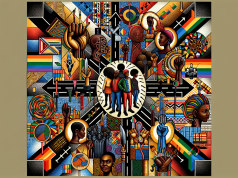In today’s diverse and complex world, understanding and addressing the concept of intersectionality is crucial for organizations striving for true diversity and inclusion in the workplace. Intersectionality refers to the interconnections between various dimensions of diversity, such as race, gender, sexuality, age, disability, and socioeconomic status. It recognizes that individuals possess multiple identities and that their experiences of discrimination and privilege are shaped by the intersection of these identities.
In order to create a truly inclusive workplace, organizations need to go beyond simply acknowledging and valuing individual differences. They must actively address intersectionality by taking into account the unique experiences and challenges faced by employees who belong to multiple marginalized groups.
One way organizations can actively address intersectionality is by adopting an intersectional approach to diversity and inclusion initiatives. This involves recognizing the ways in which various dimensions of identity intersect and influence an individual’s experiences in the workplace. By considering the interplay of race and gender, for example, organizations can better understand the specific barriers and biases faced by women of color.
To ensure that diversity and inclusion efforts encompass multiple dimensions of identity, organizations can implement intersectional practices and strategies. This includes fostering an inclusive culture that encourages open dialogue and the sharing of diverse perspectives. It also involves actively seeking out and promoting representation from underrepresented groups across all levels of the organization.
For instance, a company could establish employee resource groups that focus on specific intersectional identities, such as a group for LGBTQ+ employees of color. These groups provide a space for individuals who share multiple dimensions of identity to come together, support one another, and advocate for their unique needs and concerns within the organization.
Furthermore, organizations can implement intersectional training programs that educate employees about the concept of intersectionality and its impact on workplace dynamics. By raising awareness and promoting empathy, these initiatives can help create a more inclusive and equitable work environment.
It is important to note that addressing intersectionality requires ongoing commitment and a willingness to learn and adapt. Organizations must continuously assess and improve their diversity and inclusion efforts to ensure they are inclusive of all individuals, regardless of their intersecting identities.
In conclusion, by recognizing and addressing the multiple dimensions of diversity through an intersectional lens, organizations can create a workplace that values and respects the experiences of all employees. This not only leads to a more inclusive and equitable environment, but also enhances employee engagement, productivity, and innovation.




























